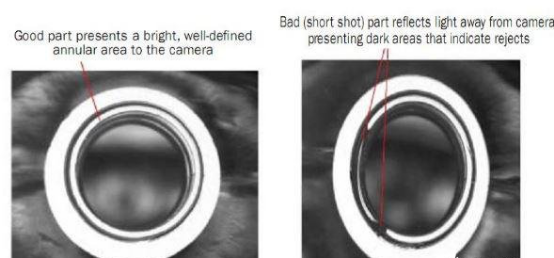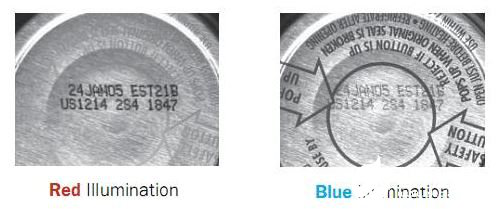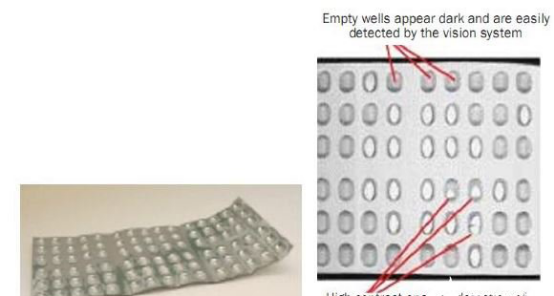How to choose the most suitable machine vision lighting?
The lighting system in the machine vision system is an extremely important part. Its quality directly affects the subsequent image processing. Before listening to a lecture by a Japanese light source expert, I didn't really know much about lighting. Isn't it just to light the image so that the camera can capture the image? But this is not the case. Illumination is far from simple to enhance the brightness of the image. A good lighting system can reduce a lot of image processing work and improve the efficiency of the entire machine vision system. How to choose the right lighting system in a machine vision system?
Proper lighting is the key to the success of machine vision applications, and it is the first to be considered. A well-designed lighting system will not only bring better performance, save time, but also save costs in the long run. Here are eight tips for choosing the most suitable machine vision lighting. They are:
(1) Use diffused light, ie Diffused Light, for detecting transparent packaging;
(2) Please use non-diffused light, ie Non-Diffused Light;
(3) Please use color light to create contrast;
(4) Please use stroboscopic flash to detect fast moving objects;
(5) Use infrared light when eliminating reflections;
(6) For accurate positioning, please use light of appropriate wavelength;
(7) Use infrared light to eliminate color changes;
(8) Use high-brightness light to detect material defects;
How does lighting affect machine vision applications?
Machine vision lighting should maximize feature contrast while minimizing other remaining contrast, so the camera can clearly see parts or marks. High contrast features simplify integration and improve reliability; poorly contrasted images and irregular lighting require more effort from the system and also increase processing time. Optimal lighting depends on the size of the object being inspected, its surface features and some geometric features and system requirements. With a wide range of wavelengths (colors) and field of view (sizes), for special application needs, you can flexibly choose machine vision lighting.
Machine vision systems that maximize quality depend on image quality. High-quality images enable the system to accurately interpret the information extracted from the detected objects, which can result in reliable and repeatable system performance. The image quality required in any vision application depends largely on the lighting conditions: color, angle, and the number of light sources used to illuminate the object means that the difference between good images can lead to better performance and also bring Poor quality images produce bad results.
There are five aspects to consider when choosing lighting:
1. Is the surface smooth or rugged?
2. Is the surface dull or shiny?
3. Is the object curved or flat?
4. What is the color of the barcode or mark?
5. Is it a moving object or a stationary object?
Tip 1: Use bright light to detect material defects
Insufficient verification in plastic casting, for example
Verifying material defects from plastic casting applications is important to ensure a good sealing surface. When there are material defects, you have insufficient conditions (such as insufficient material poured into the model).
Lighting technology: bright field
Bright field lighting technology relies on surface textures and flat terrain. The light hits a flat reflective surface and reflects the light back to the camera, creating a bright area. Rough textures or surface defects scatter light away from the camera, creating dark areas.

Tip 2: Use color to create contrast
A useful way to create a high-contrast image in machine vision applications is to illuminate objects with special wavelength (color) light. For black and white cameras, the wavelength of light can make features like color brighter or darker. Using the colored wheels as a reference, choose a light of the opposite color to darken the feature; or choose a light of the same color to brighten the feature. E.g:
1. If the feature you want to darken is red, use green light;
2. Use green light to make green features appear brighter;
3. Remember the difference between red light and blue light on aluminum.

Tip 3: Use the right wavelength for precise component positioning
For example, inspecting flipped chips (Flipped Chips), verifying proper part orientation in PCB assembly is a common machine vision application.
Lighting technology: bright field
In order to verify the assembly problem, the blue light wavelength is used to brighten the chip orientation. This lighting technology relies on wavelength and coaxial lighting geometry. The blue wavelength (460 nm) distinguishes silver and copper surfaces very well: copper absorbs blue light and presents a dark field, and silver reflects blue light and presents a bright field. Coaxial lighting geometry eliminates false reflections: unwanted glare, reflections and dark spots.

Tip 4: Detecting transparent packaging using diffused light
Such as verifying the contents of blister packaging
Lighting Technology: Continuous Diffuse
Continuous diffuse lighting technology does not emphasize changes in surface texture and elevation. It provides a very large fixed lighting angle, allowing light to find the object from multiple angles, thus eliminating reflections and typical non-directional or shadows from a single light source.

Tip 5: Use strobes for fast-moving objects
When the object is moving fast and the imaging is blurred, you need to use stroboscopic flash. Strobe width = field of view ÷ pixels / moving speed
Tip 6: Eliminate Reflections Using Infrared Light
Machine vision systems rely on grayscale transformations in digital images. In many vision applications, ambient light brings unwanted bright reflections, which makes it difficult or impossible to detect features of interest. Infrared light can solve this problem.
Tip 7: Detect cracks in glass using non-diffuse light
Such as detecting cracks in glass containers
Lighting Technology: Dark Field
In this application, dark field lighting is used to create a bright, easily detectable feature of interest against a dark background. In a dark field area, light passes directly through the transparent bottle. Most light that penetrates transparent objects is not detected by the camera. If the material is irregular, such as a crack, some light will highlight the irregularity. In particular scratches create an internal void where light is refracted and reflected, scattered at many angles including returned to the camera. These rays transform hard-to-detect scratches into bright features against a dark background.

Tip 8: Use infrared light to eliminate color differences
Infrared light can be used to eliminate gray differences between colored objects. Dark objects absorb infrared wavelengths to create consistency, while others appear shadowy. This lighting scheme is useful for detecting inconsistencies in color or shadow changes.
Selecting the appropriate lighting solution for your own machine vision system needs to be considered from multiple aspects. Select the desirable from these tips and combine them with the characteristics of your system. The lighting knowledge is very large and needs to be studied step by step.
If you want to know more, our website has product specifications for the machine vision lighting, you can go to ALLICDATA ELECTRONICS LIMITED to get more information

